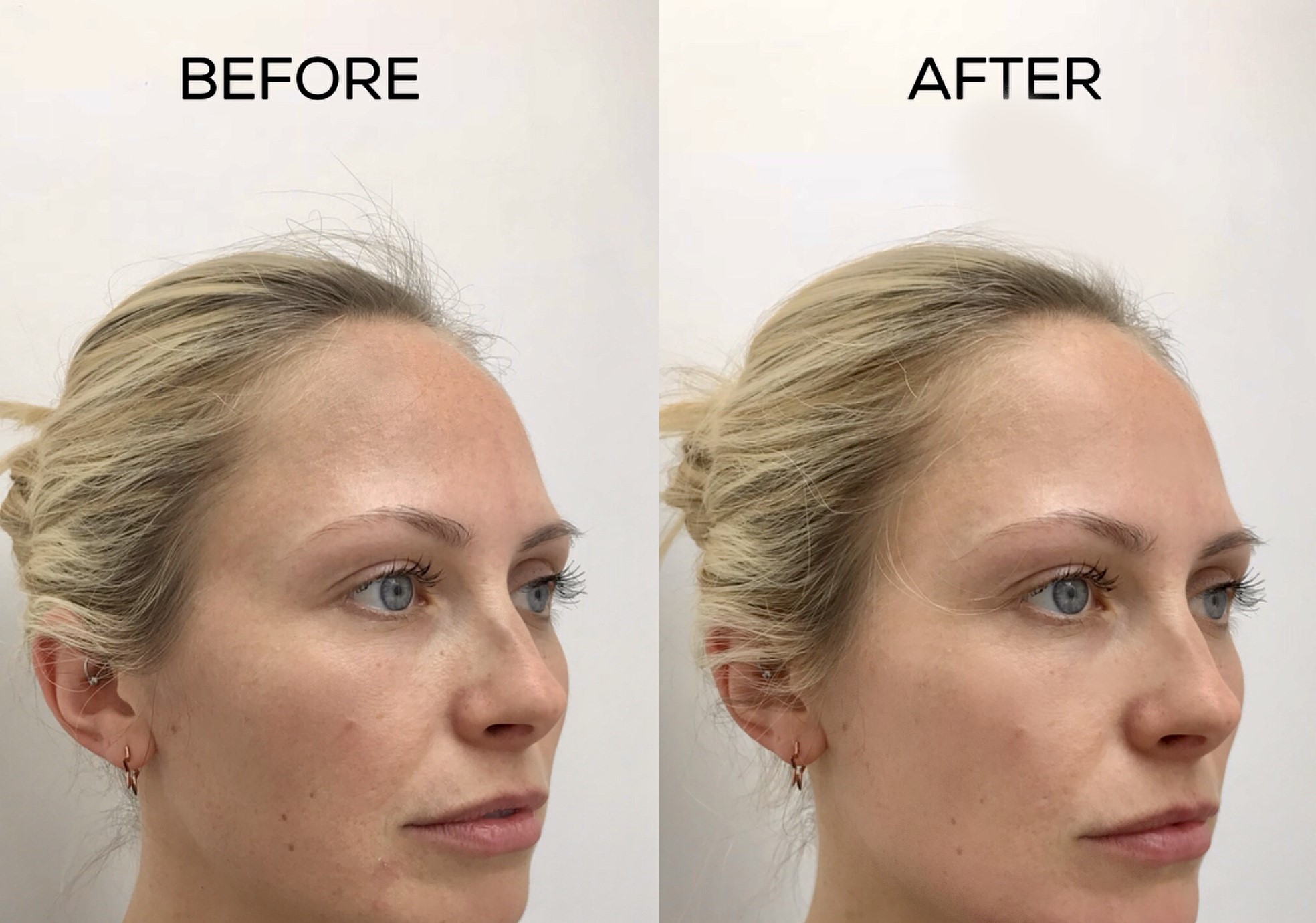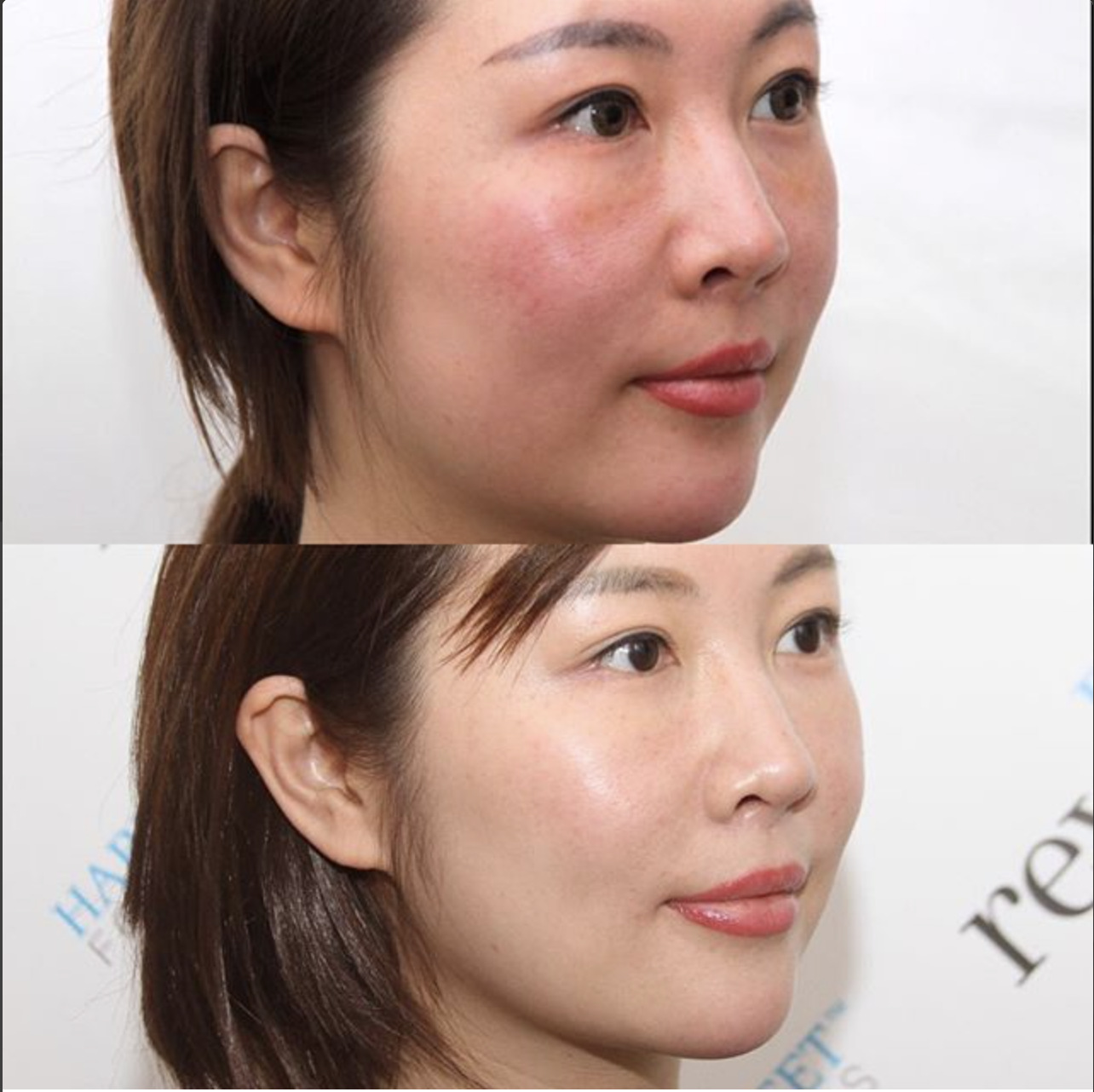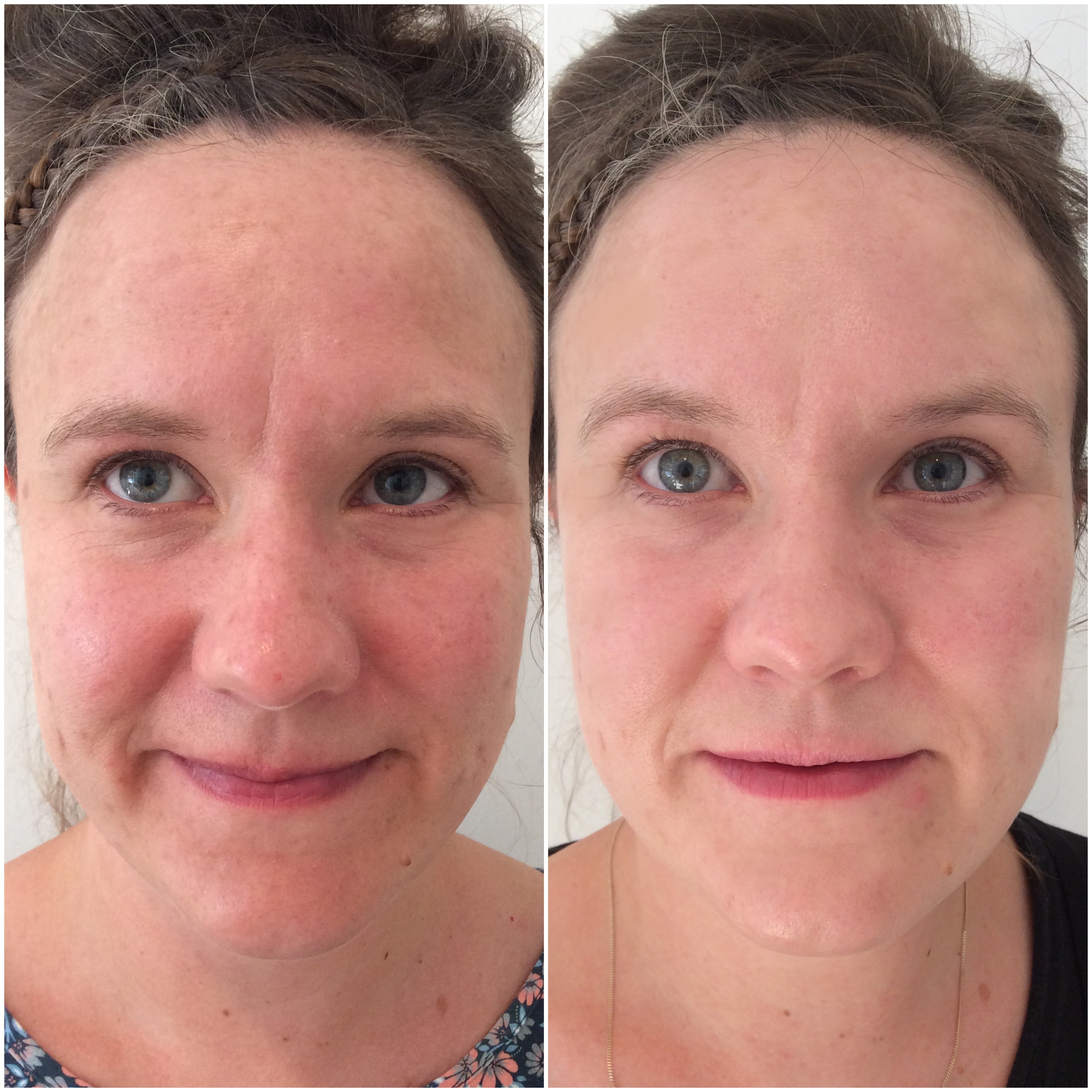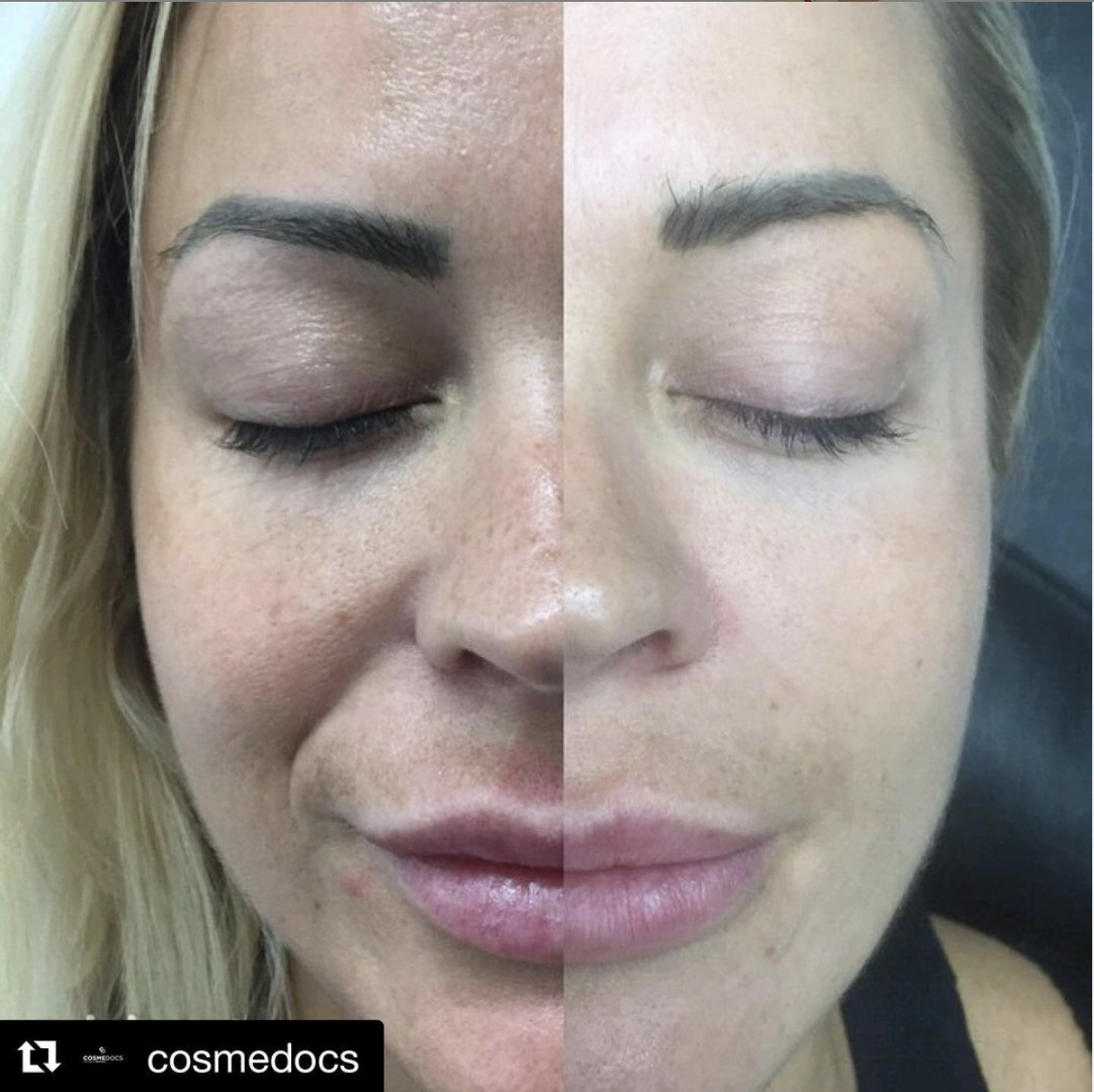-
Injectables
-
Botox -
Dermal
fillers -
Lip Fillers -
Non Surgical
Nose Job -
Chin Filler -
Under Eye Circles
(Tear Trough) -
Non Surgical
Face Lift -
Masseter Botox -
Jawline Filler -
Cheek Fillers - Calf Reduction
- Nefertiti Lift (Platysma) & Turkey Neck Bands
- Bunny Lines (Nose Wrinkles)
- Lip Flip
- Trigger Point Release
- T-Zone Oily Skin
- Dimpled Chin
- Nasal Flaring
- Gummy Smile
- Bruxism / TMJ
- Migraines / headaches
- Neck lines
- Forehead Indentations
- Botox Forhead Lines
- Botox Crows Feet
- Botox Frown Lines
- Profhilo
- PDO threads
- Hyperhidrosis (excessive sweating)
- Fat Dissolving
-
-
Skin & Body
-
V i s i t
- Chemical Peel
- Peel To Reveal Popular
- PRP (Vampire Facial)
- Prescription Grade Skin Care Popular
- Charity A Peel
- Hydrafacial
- Micro Needling (electronic) Popular
- Acne Treatments
- Facial Thread Veins
- Leg Veins (Spider/Thread Vein)
- Skin Tag Removal
- Ageing Skin Concerns
- Hyperpigmentation
- Facial Volume Loss
- Lines & Wrinkles
- Sun Damage
- Stubborn Fat Deposits
- Black Heads & White Spots
- Jawline, Jowls & Double Chin
- Cellulite
- Tired Eyes
- Neck - Lines, Wrinkles & Cords
-
- Glow & Go TM Skin Shop
- Book an Appointment Book
- CosmeShop
- Cosmetic Surgery
- CosmeTalk
-
COSMESURG| Surgical
-
| Professional EducationHARLEY STREET
INSTITUTE -
| Skin CareHARLEY STREET
FORMULATIONS -
GLOW & GO| Skin Bar Clinic
-
COSMETALK| Public Education
-
INJECTABLES
Injectables
-
SKIN & BODY
Skin & Body
-
COSMESHOP
-
COSMETALK
View All Posts
Dermal Fillers Before And After – Get The Better Version Of Yourself Today
It is true! Beauty industry has been revolutionized, aesthetic treatments have been personalized and new beauty… - ABOUT US& Treatment Criteria
What Is Sun Damaged Skin?
Sun damage is a term used to describe a skin condition that develops as a direct consequence of exposure to the sun.
Sunlight’s ultraviolet (UV) radiation affects skin cells and can result in a range of skin issues, including skin cancer.
Even if your skin does not burn, unprotected exposure to sun rays may still harm your skin. A suntan may look healthy and many ladies like that bronzy look, which is a sign of sun damage.
Sun Is #1 Enemy Of Your Skin?
Multiple clinical studies have shown that exposure to sun rays can significantly cause 80% of visible signs of ageing such as wrinkles and thinning of skin (one of the most common signs of sun damaged skin) due to Collagen and Elastin breakdown.
The capacity of your skin to synthesize collagen, which helps to keep it resilient and flexible, might be compromised by sun exposure and may be visible as a sun damage on face
How Sun Rays Cause Sun Damaged Skin
UV rays cause DNA mutations in the skin, which can lead to skin cancer and oxidative stress. UV light is divided into two types:
Ultraviolet A Ray
This type of solar radiation causes harm to the skin, from the top most layer (epidermis) to the next layer (dermis). Collagen and elastin fibres, which makes your skin bouncy, youthful and supple, are damaged in those skin layers.
Ultraviolet B Ray
UVB rays assault the outer layer of the skin. UVB destroys DNA in the epidermis more than UVA and can trigger photoaging as well as the development of precancerous cells (actinic keratoses).
Signs Of Sun Damaged Skin
Sunlight is an essential source of vitamin D, so we need some exposure to it.
However, too much exposure to ultraviolet rays can result in a myriad of serious skin concerns such as:
- Sunburn
- Age Spots
- Wrinkles and creases
- Thread Veins
- Pigmentation
- Skin Cancers
- Actinic keratoses

Client Reviews
Sun Damaged Skin Treatment Options
Peel To Reveal
Sun damaged skin can significantly be improved using Harley Street Formulations Peel To Reveal.
Experts at CosmeDocs carry out the multi-step skin peeling treatment, successfully lifting away the outermost layer of skin epidermis to reveal a smoother, clearer complexion with less wrinkles and pigmentation.
Peel to Reveal has shown amazing results for sun damage on face as well as sun damage on arms and feet.
Microneedling
Microneedling is one of the most requested sun damage treatments at CosmeDocs. The treatment effectively boosts collagen production in your skin that is damaged by sun rays.
The therapy produces micro-tears and encourages the healing process and repair, which aids in treating minor to mild sun damage discolouration.
Profhilo
Profhilo helps to address loose and sagging skin by reinvigorating and stimulating collagen and elastin production. Hence, making it one of the newest and most powerful sun damaged skin treatments available.
It is especially useful to treat sun damage on face manifested by wrinkles and creases as well as drooping skin.
Morpheus 8
The inner dermis is stimulated by Morpheus8 using powerful fractionated radiofrequency waves energy.
Wrinkles and fine lines are visibly reduced, skin is tightened, and collagen synthesis is promoted with this therapy.
Patients can notice results as early as a few days after treatment. However, it is important to note that the outcomes are best seen after a month and can last up to three months.
HydraFacial
Sun rays can cause noticeable stress to your skin. With HydraFacial at CosmeDocs, damaged and dead skin cells are gently exfoliated, replenishing tissues while eliminating free radical damage with skin boosters.
Embrace healthy and stress free skin by choosing HydraFacial, which is suitable for all skin types and skin tones for people of all ages and gender.
Sun Damage Effects:
Telangiectasias
This condition causes tiny blood vessels to appear more visible with sun damage particularly on the face along with spots at the sites where melanocytes are destroyed.
Melanocytes are cells responsible for producing called melanin, a hormone which produces colouration on the skin. Those pigmented areas worsen and cause freckles, age spots, liver spots and even white spots where melanocytes are destroyed.
Skin Bumps
Rashness starts to appear on the skin in the form of moles, warty-looking seborrheic keratoses and actinic keratoses. The latter are worst of its kind. These are small crusty bumps which are precancerous signs for melanoma with 1 in 100 in numbers developing into squamous cell carcinoma.
Prices
Price on Consultation
Why CosmeDocs
At CosmeDocs, we improve the appearance of sun damaged skin, and these treatments are performed by doctors who are fully experienced in the process with a good track record.Our Doctors at CosmeDocs have experience in treating Sun Damaged Skin, and various treatment options are available for our patients.As a result, we are rated one of the best skin cares in London and pride ourselves on having a professional team skilled in the most cutting edge treatments to reverse the signs of ageing.
Frequently Asked Questions
What Is The Difference Between UVA & UVB Rays?
The sun emits three types of radiation: UVA, UVB, and UVC, but only UVA and UVB rays reach the earth’s surface. Too much exposure.
UVA raises the chances of getting skin cancer and wrinkles, Whereas UVB rays are the primary cause of sunburn. Unfortunately, UVA rays are not protected by glass.
Is it possible to prevent sun damaged skin?
Absolutely, by wearing a sunblock or sunscreen every day, you can decrease the chances of not only a sun damaged face but also prevent the development of skin cancer.
Moreover, when exposed to direct sunlight, cover your skin as much as possible.
Wear a hat or a visor to avoid direct sunlight to protect your face.
Apply sunscreen generously and frequently, especially if you are in and out of the water or sweat a lot.
Is it possible to reverse sun damaged skin?
Professional sun damage Treatment might help reverse certain signs of sun damaged skin.
Chemical skin peels and Peel to Reveal treatments can help erase tough age spots and pigmentation, a sign of sun damage on forehead and face.
Profhilo, facial fillers are effective rejuvenation procedures that can be used to plump out the skin where drooping has occurred and wrinkles have developed.
Sun damage on face can be treated with microneedling, which aims to boost the skin’s natural collagen synthesis. Moreover, whether it is sun damage on nose or sun damage to arms, topical skin creams and cosmeceuticals can ensure the correction of this skin condition clinically.
What Is meant by an SPF?
The sun protection factor, or SPF, indicates how safe you are from the sun.
The SPF rating indicates how much the sunscreen or sunblock protects you from UVB rays, which cause sunburn.
Most sunscreens also absorb UVA rays. The higher the degree of protection, the higher the SPF number.
Hence, it is essential that everyone should use sunscreen with an SPF of 30 or higher to avoid sun damaged skin.
How often should I apply sunscreen?
In short, every 2 hours. According to Johns Hopkins Medicine, For continuous protection, reapply sunscreen every two hours.
However, if you’re sweating or swimming, you should apply more frequently. Experts advise reapplying sunscreen at least every 80 minutes to ensure protection even when you’re physically active.
How do Retinoids help to treat sun damaged skin?
To retexturize and correct sun damaged skin, boost skin cell turnover and treat patchiness and uneven skin tone, topical retinoids can be used included in skincare regimen.
Moreover, retinoids aid in the development of collagen and elastin compromised by UV rays.
What are some critical body areas that are commonly skipped while applying sunscreen?
When putting on sunscreen, make sure to coat any area that may be exposed to direct sunlight.
The following are some typical places that may be overlooked:
- Ears
- Arms
- Neck
- Back of your hands
- Top of your feet
- Nose
- Scalp
It is important to use a lip balm with sun protection to avoid sun damaged lips when you go out in the sun.
What are the early signs and symptoms of skin cancer?
Skin cancer is among the few cancers that can be seen. Perform regular self-exams of your complete body to identify it.
If one of your moles or other brown patches has grown significantly, pigment, shape, or texture, see a dermatologist immediately.
You can opt for fake tanning sprays or lotions to achieve that bronzed glow without risking your skin with tanning lamps and tanning beds.




















